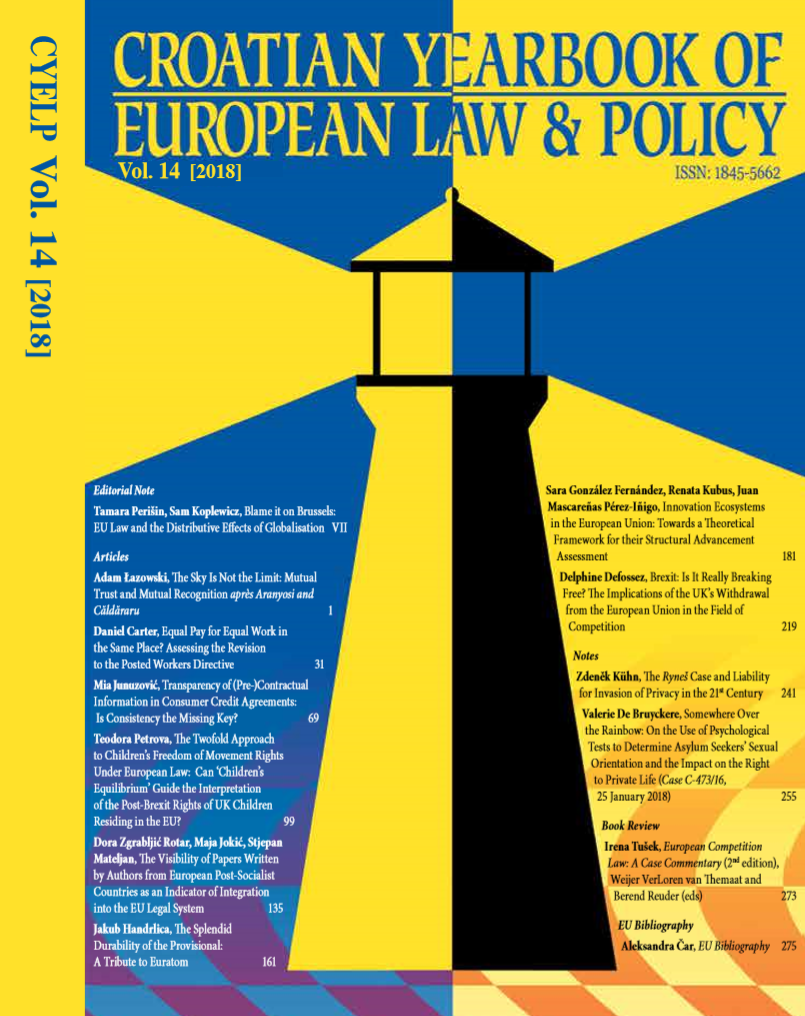Transparency of (Pre-)Contractual Information in Consumer Credit Agreements: Is Consistency the Missing Key?
Abstract
This article shows that there is a lack of consistency in the interpretation of the meaning and scope of the obligation of traders to provide transparent pre-contractual and contractual information on consumer credit to consumers in EU law. On the basis of an analysis of transparency requirements prescribed by the Unfair Contract Terms Directive and the Consumer Credit Directive, differences in the understanding of transparency are highlighted. While the transparency test under the Unfair Contract Terms Directive focuses on the question of comprehensibility of credit information, the transparency test under the Consumer Credit Directive focuses on the format, position, length and font size of information. Consequently, the transparency of the same information provided in the course of concluding a consumer credit agreement could be evaluated differently on the basis of these two directives.
This lack of consistency in the interpretation of transparency might pose a particular problem for national enforcement authorities. In the example of Croatia, it is demonstrated that the lack of guidance and consistency in the interpretation of various transparency requirements in the area of consumer credit at the EU level leaves space for national enforcement authorities to develop their own understanding of transparency. Where national enforcement authorities develop a narrower approach to transparency, consumers can be deprived of the protection guaranteed by EU law. In areas such as consumer credit, where the obligation of the transparent provision of information is the main tool of consumer protection and market integration, ensuring greater consistency in the interpretation of the content of this obligation is the key to ensuring its effectiveness.
Downloads
Published
How to Cite
Issue
Section
License
All manuscripts published in CYELP are licensed under the Creative Commons Attribution − Non-Commercial − No Derivatives 4.0 International License. This permits anyone to copy and redistribute their work in any medium or format for non-commercial purposes provided the original work and source are appropriately cited.
For all manuscripts published in CYELP, the copyright remains with the author(s). This means that the author(s) grant the right of first publication to the Yearbook, while retaining the copyright to their manuscripts (accepted for publication or published in CYELP), and may republish these, in full or in part, in other publications, books or materials. However, the following conditions should be met:
- the manuscript is published open access;
- when reusing the manuscript, the original source of publication must be properly acknowledged and referenced;
- the manuscript remains published by CYELP on its website;
- the manuscript is licensed under the Creative Commons Attribution − Non Commercial − No Derivatives 4.0 International License.


